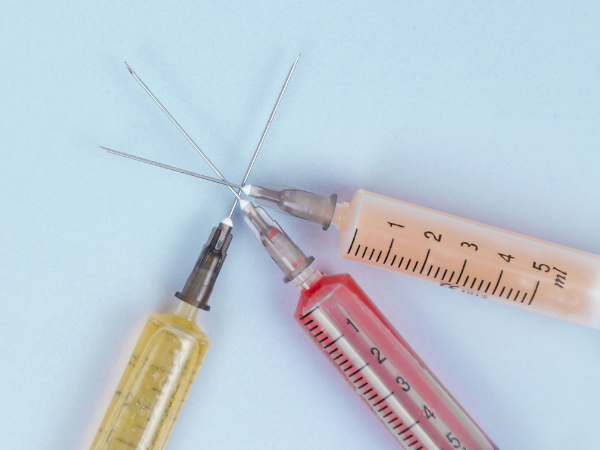The realm of modern medicine is perpetually on the cusp of revolution, driven by advancements in drug delivery systems. These systems are crucial for administering medications in a manner that increases their efficacy, safety, and patient compliance. Among the materials leading this transformative wave are poly(lactic-co-glycolic acid) (PLGA) microspheres. They have garnered attention for their versatility, biodegradability, and FDA approval for therapeutic use.
This blog delves into the multifaceted applications of PLGA microspheres in biomedical fields. It will also showcase their pivotal role in drug delivery, cancer therapy, and tissue engineering.

Background on PLGA Microspheres
Microspheres are particles that can be created through double emulsion or an oil in water process. These methods are used to control the loading efficiency of the microsphere. As they are biodegradable, they can be used to contain different types of drugs, including water soluble drugs. They can then be injected into the body as a targeted drug delivery system (DDS).
PLGA is renowned for its biodegradability and biocompatibility. These properties make it an ideal candidate for fabricating microspheres that can be employed in various medical applications.
The degradation elements of PLGA are lactic and glycolic acids. These are naturally metabolised by the body. Therefore, this makes PLGA particularly appealing for use in long-term implantable medical devices.
As well as this, the engineering of PLGA microspheres allows for the precise control over drug release rates. This sustained release can offer delivery over weeks to months, which is crucial for chronic conditions that require consistent medication levels. Uniform particle size distributions are also important for these microspheres, as consistency enables effects that can be easily replicated.
Drug Delivery Applications
Drug-loaded microspheres offer a controlled release mechanism that stands to revolutionise how medications are administered.
The cornerstone of PLGA microsphere utilisation lies in drug delivery. By using drug encapsulation within a loaded PLGA microsphere, it is possible to:
- Protect the active ingredients from premature degradation
- Enhance absorption by the target tissues
- Minimise the side effects associated with systemic drug distribution.
This targeted delivery system is particularly beneficial for medications that require specific concentrations to be effective. By using this system, it can reduce the frequency of dosages and improve patient adherence to treatment regimens.
Cancer Therapy
In the realm of oncology, PLGA microspheres offer a promising avenue for targeted cancer therapy. They can be engineered to deliver chemotherapeutic agents directly to tumor sites, minimising the impact on healthy tissues. This targeted approach not only enhances the efficacy of cancer treatments but also significantly reduces the adverse side effects typically associated with chemotherapy.
Furthermore, the versatility of PLGA allows for the co-delivery of drugs and diagnostic agents. This can pave the way for theranostic applications that combine therapy and diagnosis in a single platform.
Tissue Engineering
Beyond drug delivery and cancer therapy, PLGA microspheres find application in tissue engineering. They can serve as scaffolds that support the growth and differentiation of cells for tissue regeneration. This is particularly relevant in the fields of bone regeneration. PLGA microspheres can be used to deliver growth factors that stimulate bone tissue repair and wound healing.
The biocompatibility and biodegradability of PLGA microspheres are key attributes, ensuring that the scaffold gradually dissolves as the new tissue forms, eliminating the need for surgical removal.
Challenges and Future Directions
Despite their promising applications, the use of PLGA microspheres is not without challenges. These issues remain areas of ongoing research:
- Scalability
- Reproducibility
- Patient-specific Customisation
The future of PLGA microsphere technology lies in addressing these challenges, with innovations aimed at:
- Improving the precision of drug release profiles
- Enhancing targeting capabilities
- Developing multifunctional systems that integrate diagnostics with therapy.
Scanning electron microscopy (SEM) may also be an option to analyse microspheres based on their physical properties and characteristics.
Want to Learn More about PLGA Microspheres?
PLGA microspheres represent a significant advancement in the field of biomedical applications, offering innovative solutions for drug delivery, cancer therapy, and tissue engineering. Their biodegradability, biocompatibility, and ability to provide a controlled and targeted delivery make them a valuable tool in the development of next-generation medical treatments.
As research continues to unfold, the potential for PLGA microspheres in transforming patient care and treatment outcomes is immense. The use of these microspheres will mark a new era in personalised and effective healthcare solutions.
If you are interested in PLGA microspheres and microsphere preparation, and are curious to see how these solutions could be applied to your own work and research, reach out to Powder Systems today. Microsphere formulation is one of our specialities. Explore our selection of products to find the perfect technology for you now!
